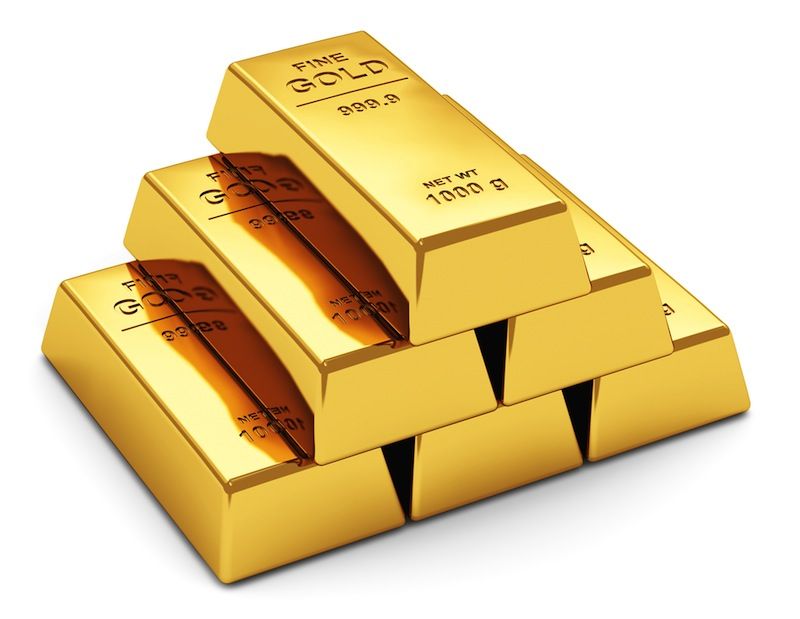Akshaya Tritiya on May 14: How to buy Gold bonds, Digital Gold or Gold ETFs

It’s that time of the year for Hindus when gold is a mandatory item on the shopping list. Yes, it’s Akshaya Tritiya. The date is May 14. As such, this day and its gold buying tradition seem to make excellent sense in this pandemic-stricken world where global policymakers are resorting to monetary inflation (aka printing money), credit expansion and government spending to tackle the economic fallout of Covid-19. So, what should you buy on May 14? Will it be sovereign gold bonds, digital gold or gold exchange traded funds (ETFs)? Let’s discuss.
Gold price outlook
Hitesh Jain, Lead Analyst – Institutional Equities, YES SECURITIES says rising inflationary trends should be conducive for gold, implying investment demand for the yellow metal will likely increase in the coming months.
Despite the rising inflationary trend, the US Fed is not keen on normalizing monetary policy for quite some time, citing inflation as a transient phenomenon.
“As a result, we will likely live with a weak dollar and ring-fenced US 10 yr yields, yet another narrative of negative real yields that will work for gold. Moreover, speculative flows on the CME shows money managers raised their net long exposure in April,” said Jain.
On the other hand, the Indian rupee is also back to its depreciating trend with the second wave of Covid-19 and resulting restrictions raising concerns on the growth outlook and prompting foreign investors to trim their Indian investments. This too will support domestic gold prices, says Chirag Mehta, Senior Fund Manager – Alternative Investments, Quantum AMC.
Digital gold: Wealthzi-Augmont partnership
Wealthzi has partnered with Augmont, a gold trading company, for its customers to purchase digital or physcial gold. Augmont is an unique platform for retail buyers to buy Gold and Silver products in a transparent and convenient manner. Through Wealthzi, one can buy very small quantities of gold and silver as low as worth Re.1/- at the lowest possible prices. The precious metal purchased is stored in a safe and secured third party vault on behalf of the customer which is monitored and controlled by IDBI Trusteeship Services.
Customer can request for the physical delivery of the gold and silver in the form of coins and jewellery anytime they want as per their convenience. Customers can sell the the metal purchased back to Augmont at the prevailing market prices. Delivery of purchased gold starts at 0.1 gram and there is no lock-in period.
Not just that, you can even accumulate gold/silver by buying additional quantities via monthly SIP starting Rs 1000 for 1 year to 10 years tenure. Hold on to the quantities for no extra charges.
While digital gold offerings meet the purity and liquidity criteria, they could fall short on regulation and price efficiency due to high premiums and bid-ask spreads. So, buy from a proper platform like Wealthzi/Augmont. (Register on Wealthzi to purchase gold through Augmont).
Sovereign gold bonds
Another emerging area for gold investing is Sovereign Gold Bonds (SGB). These bonds pay annual interest and are tax-efficient.
SGBs can be bought through eligible institutions when a new issue opens, or from investors in the open market (secondary market). The issue price is one gram of gold and those paying digitally can get a discount of ₹50 per gram. As an individual, you can buy a minimum of 1 gram and up to a maximum of 4 kilograms during a financial year. SGBs can be bought from banks, designated post offices, Stock Holding Corporation of India, National Stock Exchange of India and BSE .
While the investment tenure of these bonds is eight years, early redemption with the RBI is only allowed from the fifth year onwards.
There is no purchase cost involved in SGBs. So, the capital gain on SGBs in certain cases is exempt from tax. Also, investors receive an interest of 2.5 per cent per annum (paid semi-annually) on their initial investment in the SGBs. Lastly, these bonds are backed by sovereign guarantee.
In terms of cons, SGBs suffer from low secondary market liquidity resulting in price inefficiencies. While these bonds offer exposure to gold, they do not fulfill the needs of auspicious-related buying as they are not backed by physical gold.
Gold ETFs
Gold ETFs are backed by 24 karats physical gold and usually are a good proxy to track the gold prices. So, if gold prices move up by 20 per cent, gold ETF will move by a similar amount.
Gold ETFs are traded on the exchanges at the prevailing market price of physical gold with no making charges eating into investor returns. However, gold ETFs have expense ratios, which is a cost to be reckoned with. Gold ETFs can be bought for the price of 1 unit. The price can change every day, depending on trading volumes and the demand-supply scenario.
To invest in gold ETFs, you will need to open a demat account. But remember that when you redeem a gold ETF, you don’t get physical gold. You will get money. Unlike physical gold, Gold ETFs straight away saves investors a 3 per cent cost due to GST offset. Gold ETFs are taxed just like physical or digital gold.
In terms of cons, the expense ratio and demat related charges are something that investors have to pay for holding investments in gold ETFs.

